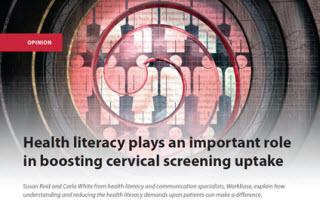- Home
- News
- Screening Matters, Issue 45, April 2014
- Health literacy study has learnings for cervical screening
News
- Screening Matters Newsletter
- April 2019
- April 2018
- December 2017
- August 2017
- April 2017
- December 2016
- October 2016
- March 2016
- November 2015
- August 2015
- June 2015
- April 2015
- February 2015
- December 2014
- October 2014
- August 2014
- June 2014
- April 2014
- February 2014
- December 2013
- October 2013
- August 2013
- June 2013
- April 2013
- February 2013
Screening Matters
The National Screening Unit newsletter
In this issue:
- Newborn hearing screening picks up profound hearing loss
- Health literacy study has learnings for cervical screening
- NCSP coverage rate nears 80 percent target
- Newborn Metabolic Screening Programme Monitoring Update
- Screening for Down syndrome and other conditions - information for practitioners
- Pacific Radiology new Southern district breast screening provider
- NCSP monitoring reports now available
- National breast cancer conference in June
Health literacy study has learnings for cervical screening

The year-long, Ministry of Health-funded study, by health literacy and communication specialists Workbase, involved in-depth interviews, observations and surveys of patients and health professionals about a screening programme.
Workbase project manager Carla White says while the study wasn’t about cervical screening, it identified many barriers relevant to a cervical screening programme.
“For example, screening wasn’t always offered, despite being recommended. Even when offered, communication about the screening often minimised its importance. Also, the rationale for screening did not always make sense to patients or highlight its importance.
“Significantly, health professionals felt patients’ non-completion of screening procedures arose from a lack of patient compliance rather than from health professionals’ failure to properly engage the patients and provide an adequate and relevant rationale for screening.
“Patients who completed the screening did so because their health professional had made a compelling case that was inextricably linked to the patient’s – and wider family’s – wellbeing.”
Ms White says like a number of other OECD countries, New Zealand statistics show that more than 56 percent of adult New Zealanders have low health literacy, often defined as ‘a person’s ability to obtain, process and understand basic health information and services in order to make informed and appropriate health decisions’.
“On the face of it this definition seems to imply that health literacy is entirely a patient-specific issue. However, people receive information from a whole range of sources.
“Health systems, health professionals and health care providers all play a critical role because they place many of the health literacy demands on patients and families, such as complicated referral and booking systems.”
She says it’s important to understand why women are not participating in cervical screening and then work on removing or reducing the barriers. “Efforts to improve screening uptakes should recognise complex processes are often involved which can challenge all women – even those with strong health literacy skills.
“Integrating health literacy practices requires health organisations to incorporate it into strategic and operational planning, service delivery, leadership and management. Efforts should also be made to involve patients in planning and evaluating programmes.”
You can read a summary of the report here.
To receive the Screening Matters newsletter by email, fill out our sign-up form.

